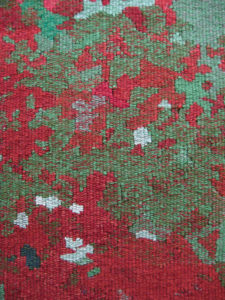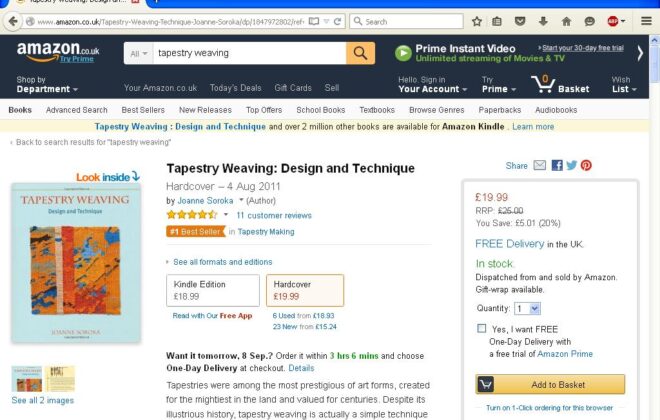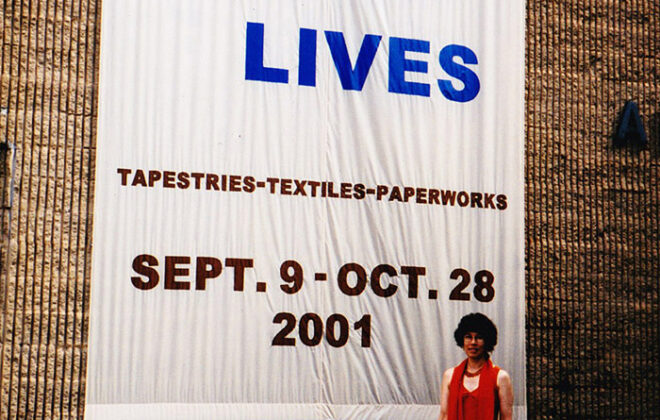Is it a tapestry? No.

I think every tapestry weaver has had the experience of meeting someone at a party and, following the reply to the question, ‘What do you do?’, has got the reply, ‘Oh yes, my aunt does that.’ I inevitably suppress the inclination to sigh and give the practised answer, ‘I think you mean embroidery, not tapestry weaving. Embroidery is created by sewing into an existing cloth, while tapestry weaving starts from nothing, and then threads are interlaced using stretched warp on a frame or loom, with the image created as the fabric is.’ I’m not always sure I get through.
The first villain is the marketing departments of manufacturers of embroidery kits, who must have thought that ‘tapestry’ sounded better, posher than embroidery. Google ‘tapestry kit’ and you will inevitably see reams of ones for cross stitch and needlepoint, complete with instructions. Sometimes they are even copies of actual historic tapestries, such as the Lady and the Unicorn.
If you search for ‘tapestry’, you will find many more non-tapestries. Often they are described as ‘hippie’ or ‘mandala’ and may be made of 100% polyester. Generally they are the size of a tablecloth and can even double as one. One site states, ‘Wall Tapestries are lightweight, durable and portable. Hang your tapestries up, use them as a tablecloth, picnic blanket, cover and more.’
The third culprit is community projects such as the ‘Great Tapestry of Scotland’. These worthy endeavours allow amateur embroiderers to collaborate, each making a section of a huge work, usually to a pattern they are provided with by the overall designer. It’s still not a tapestry, although it has the tapestry-like attributes of being large and having a narrative.
The Oxford dictionary definition of tapestry is ‘a piece of thick textile fabric with pictures or designs formed by weaving coloured weft threads or by embroidering on canvas, used as a wall hanging or soft furnishing’. Even this is not correct, but shows the way the word has become corrupted.
Then of course modern tapestry weavers don’t always want to stick to warp and weft. They may use other textile techniques, such as tufting or embroidery. Yes, embroidery can be a work of art, if it is designed by the maker and is a creative response to the medium. To me these last are all tapestries. Anything which is a textile work of art is, but nothing else is. Rant over.




